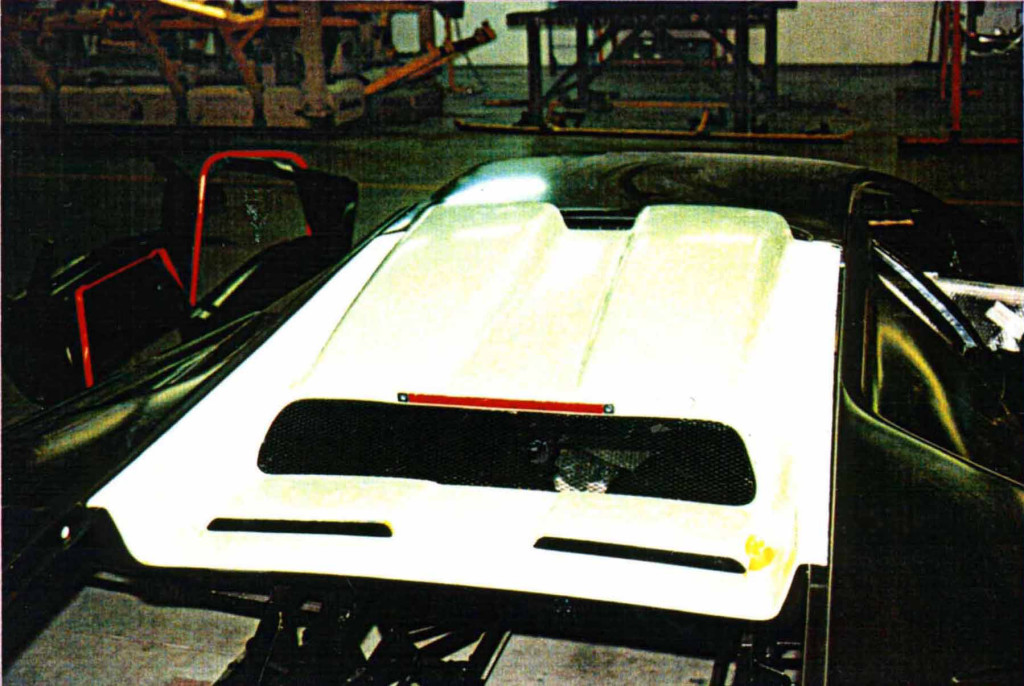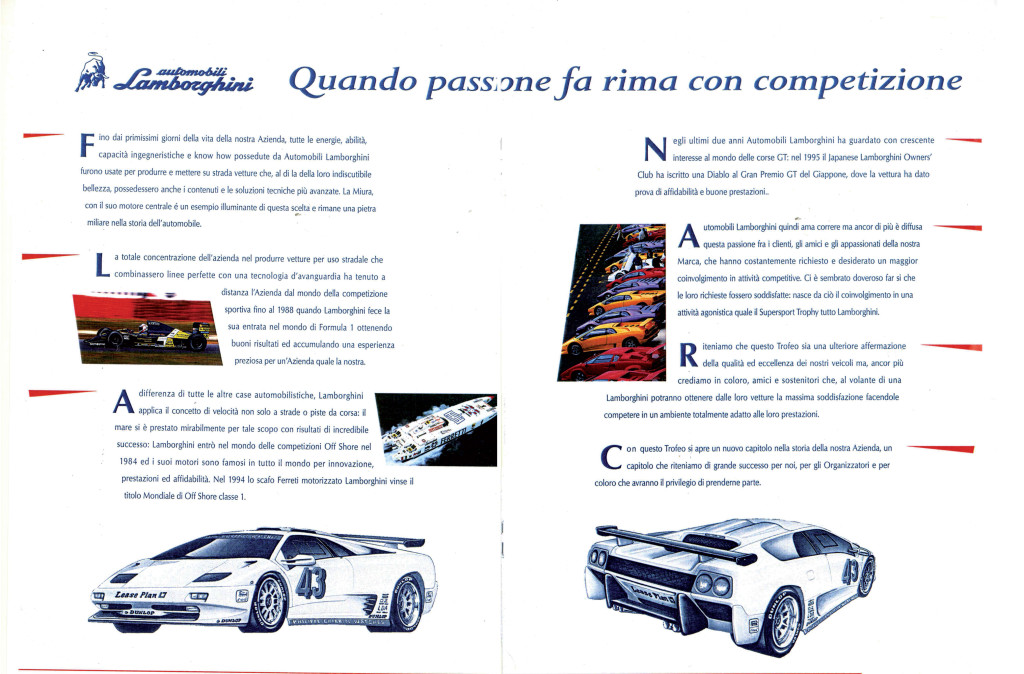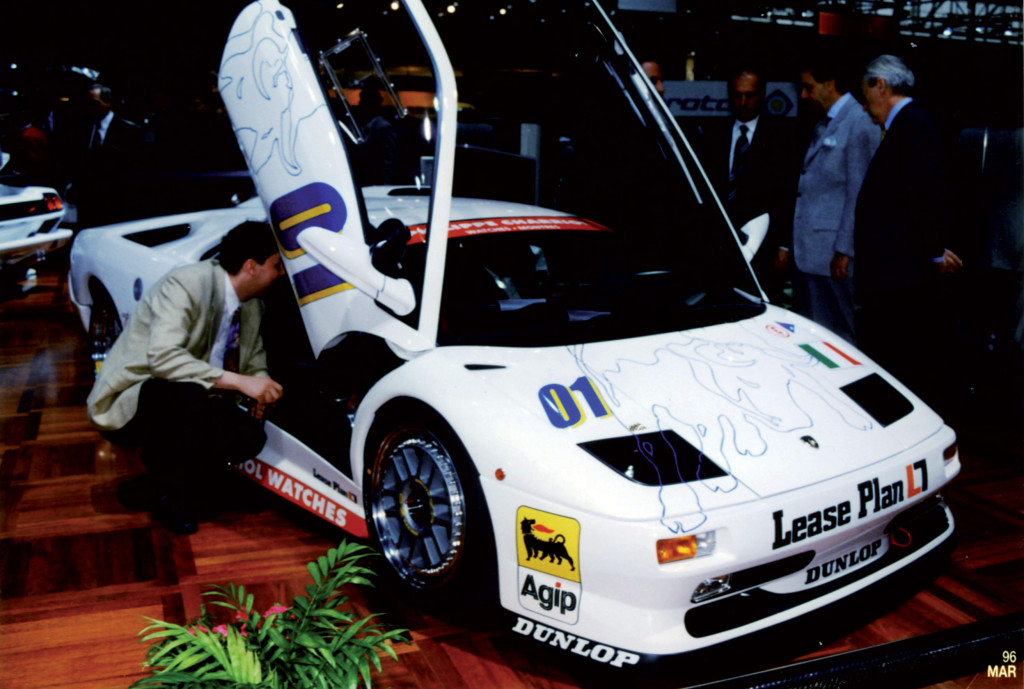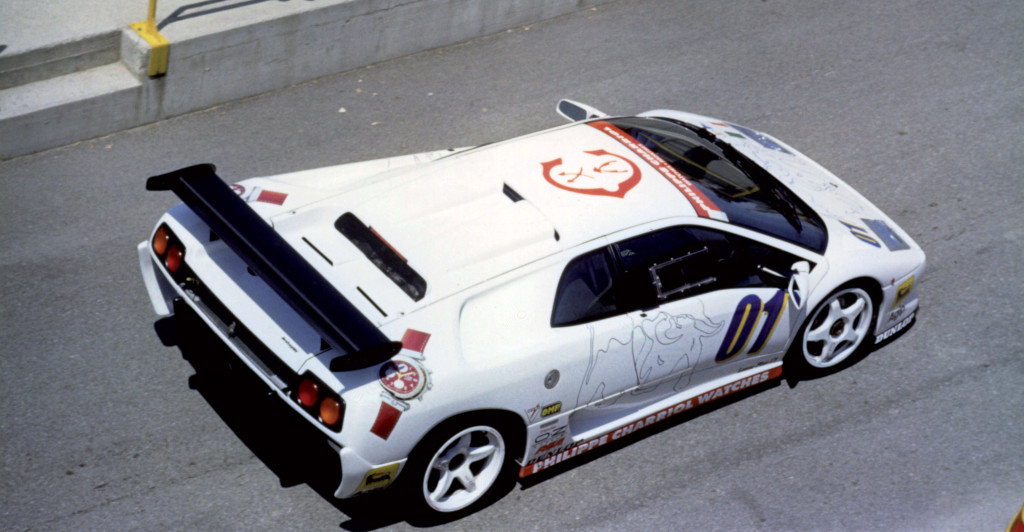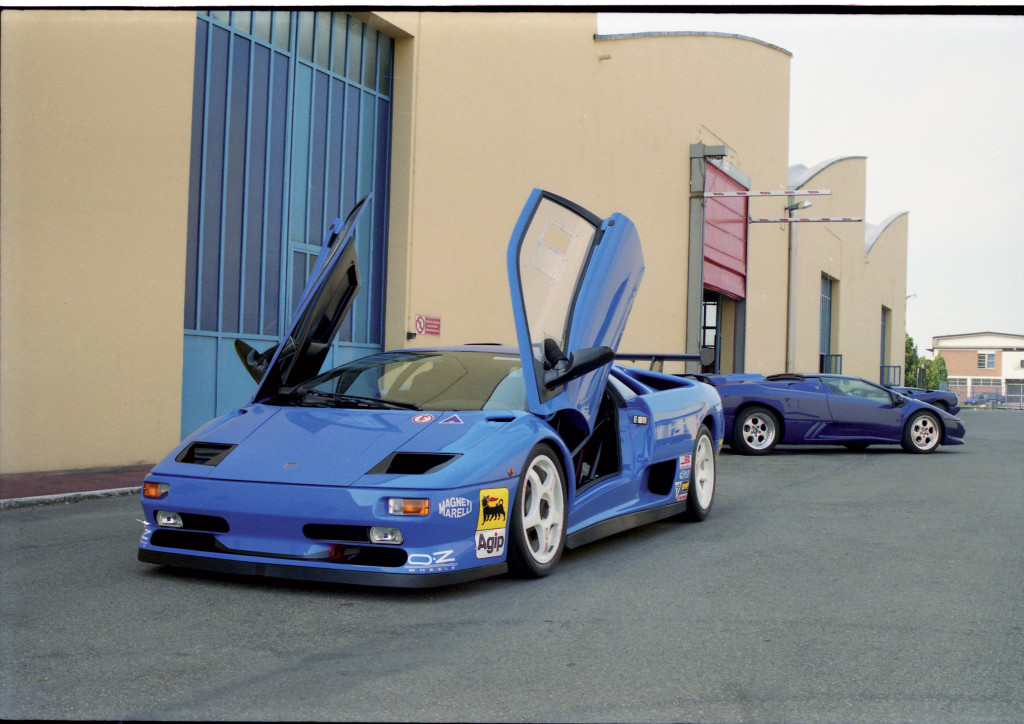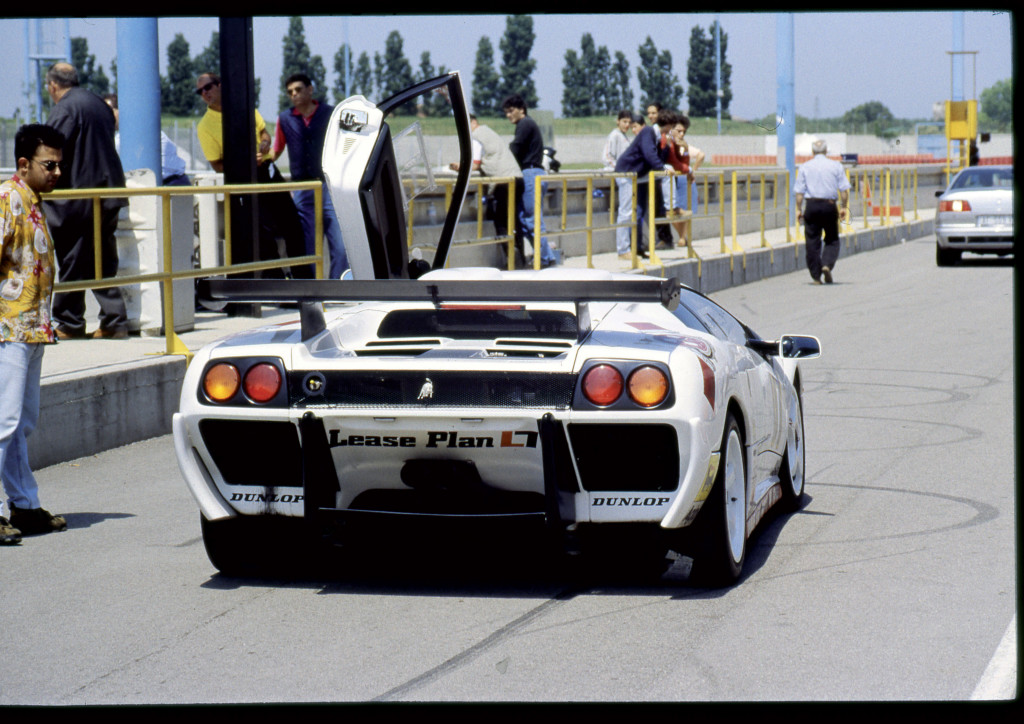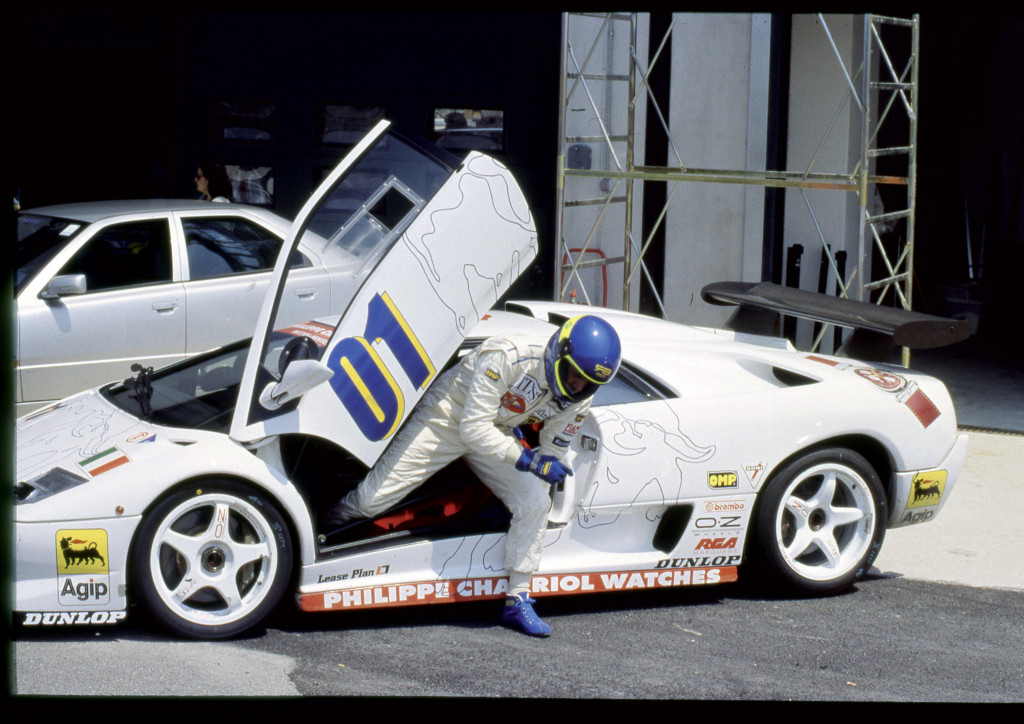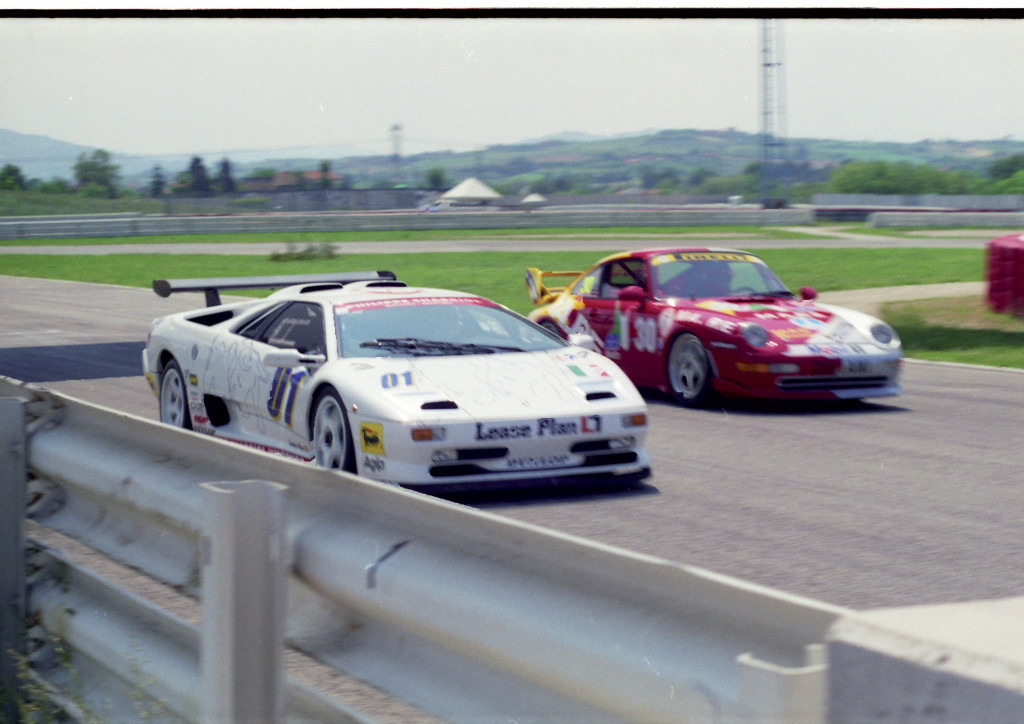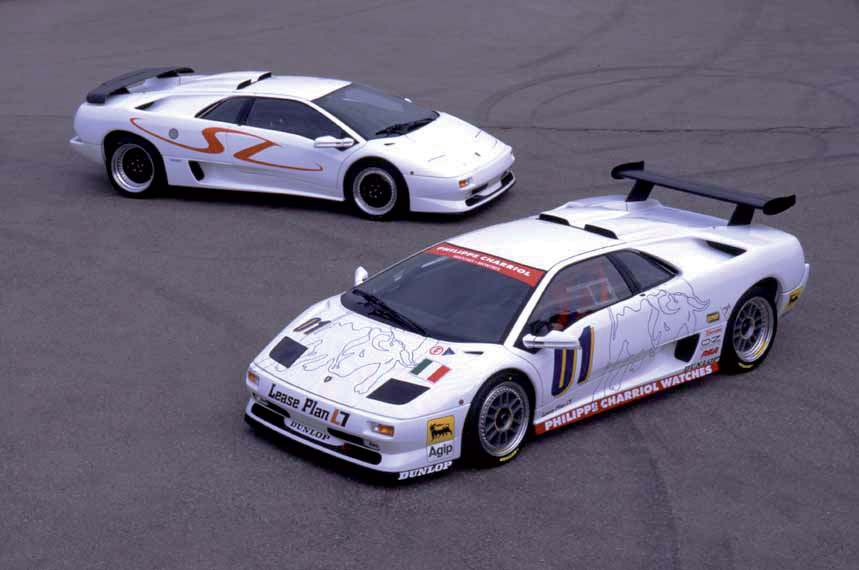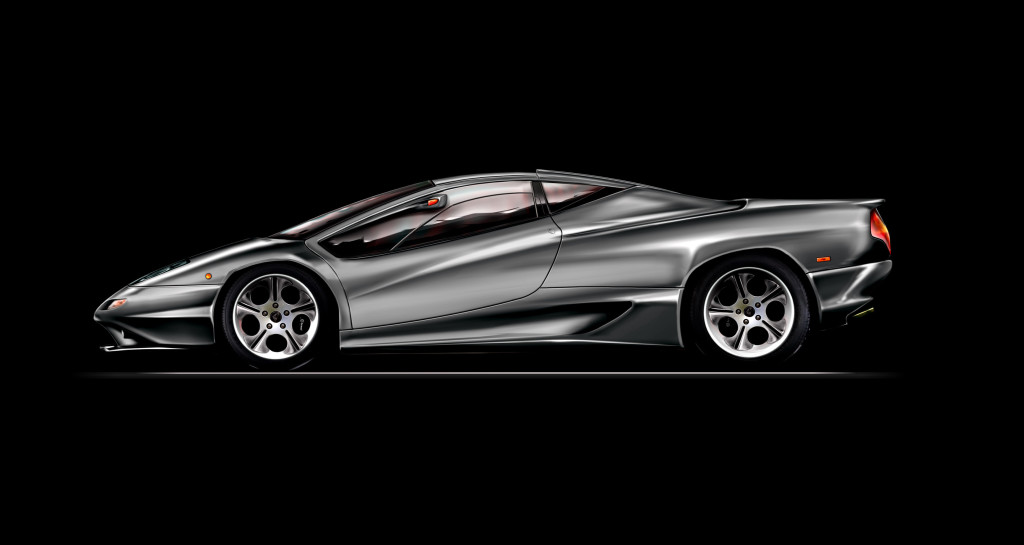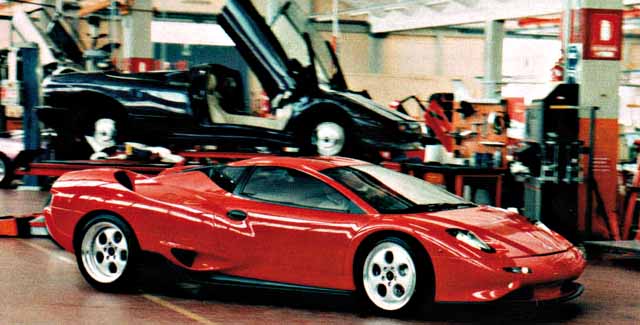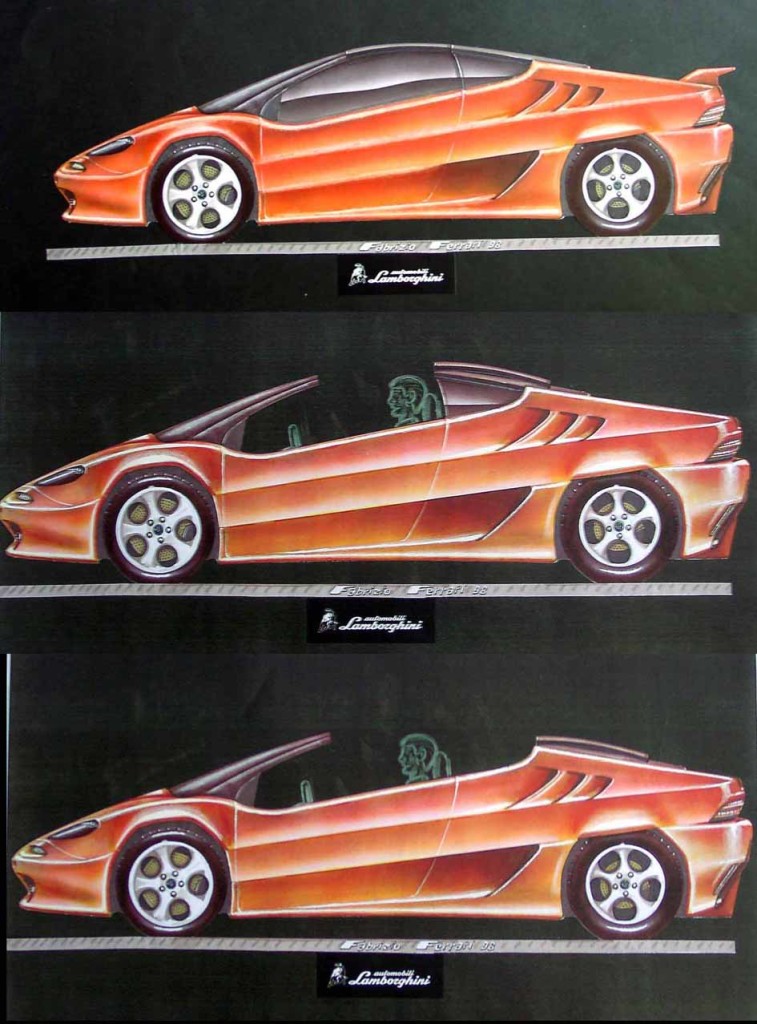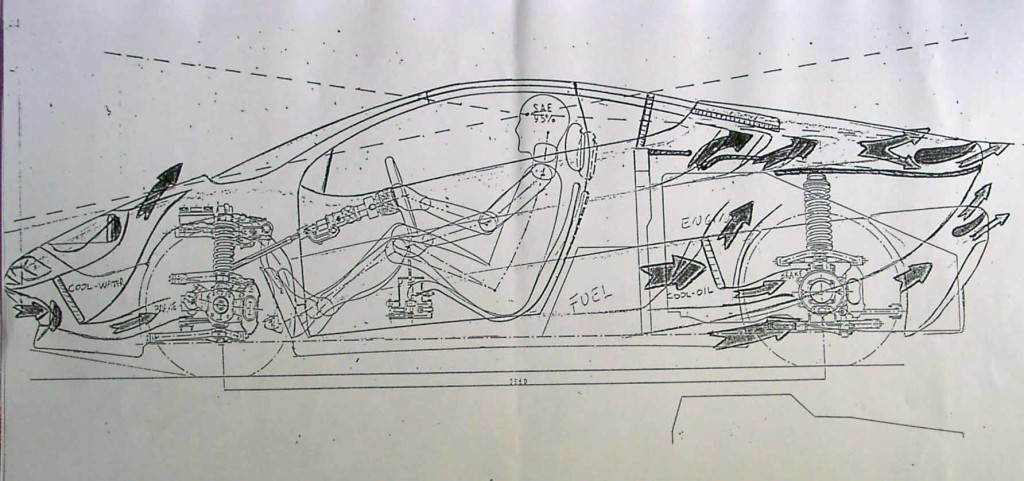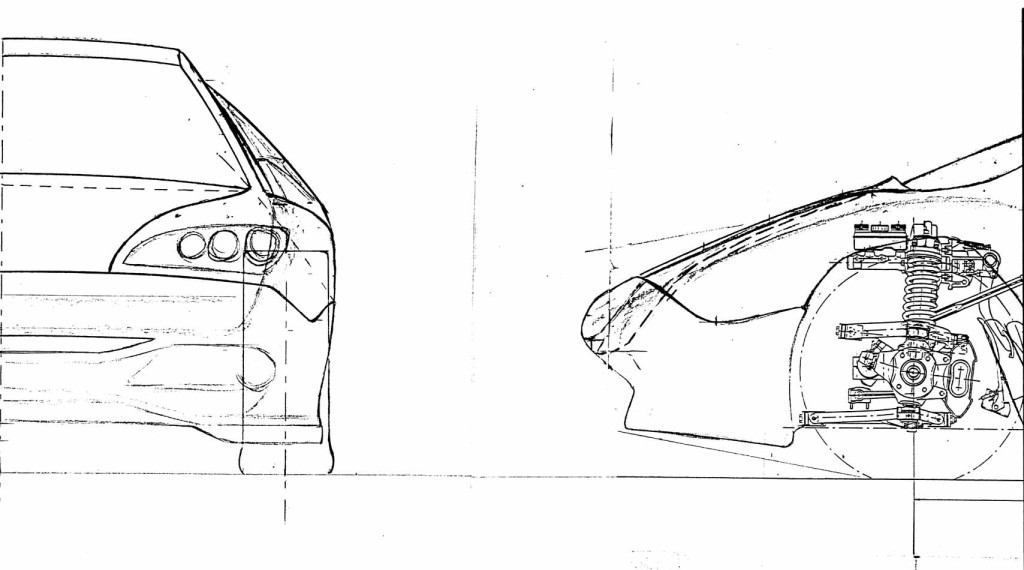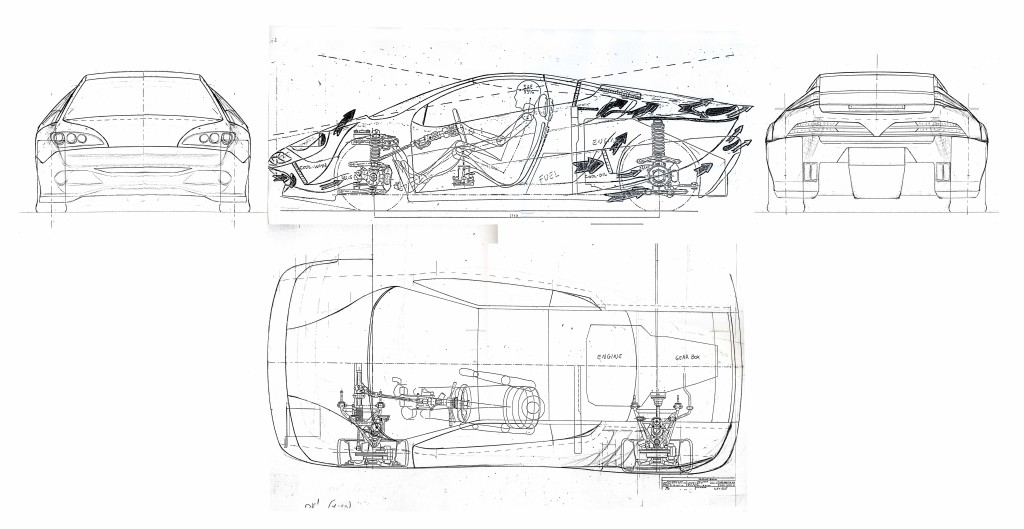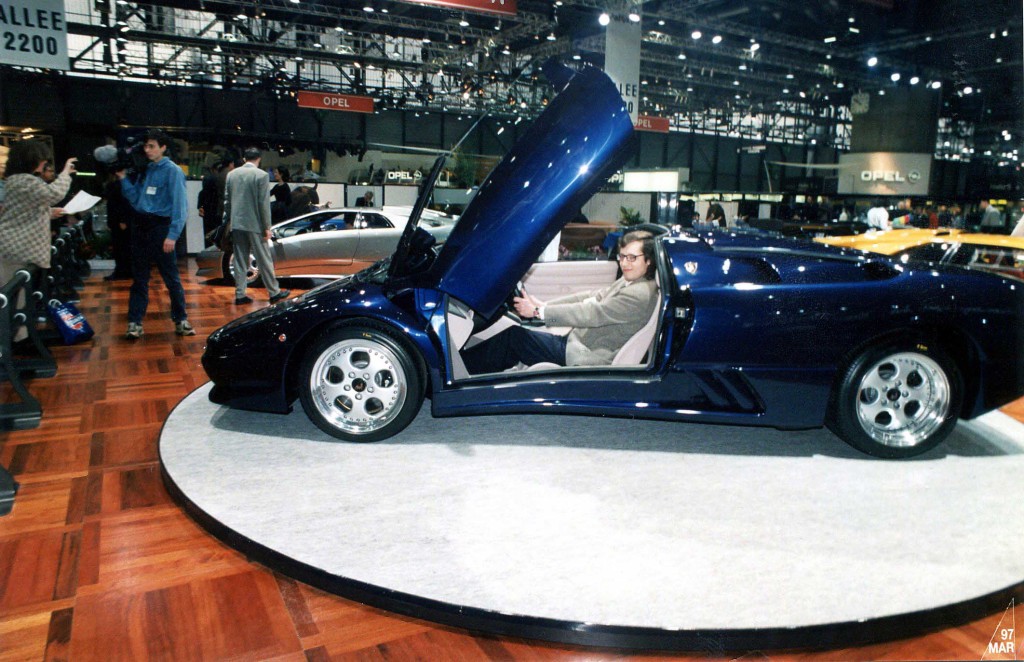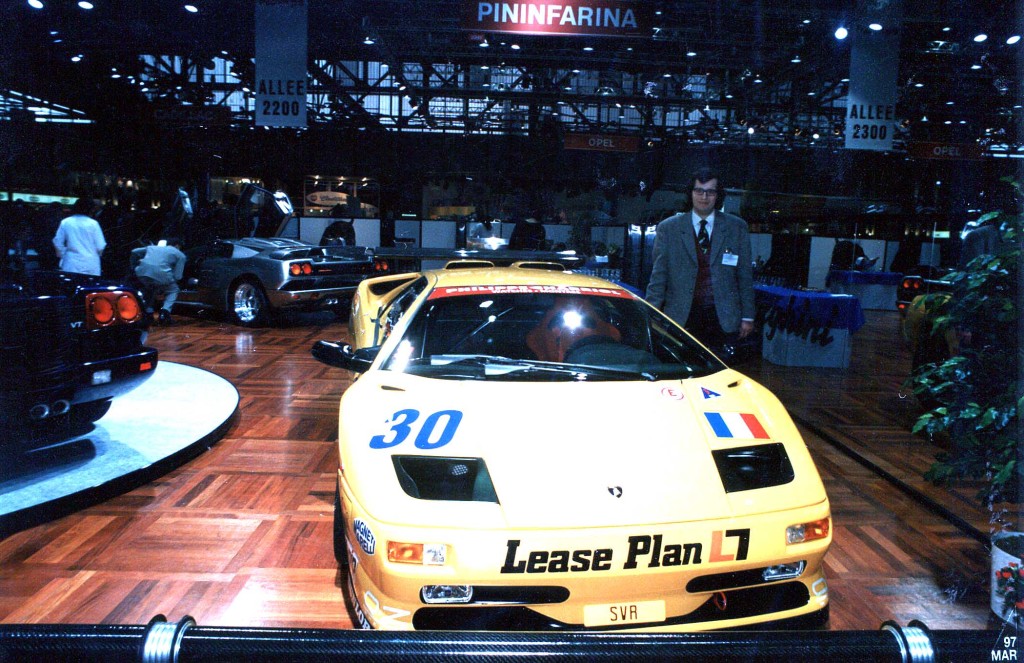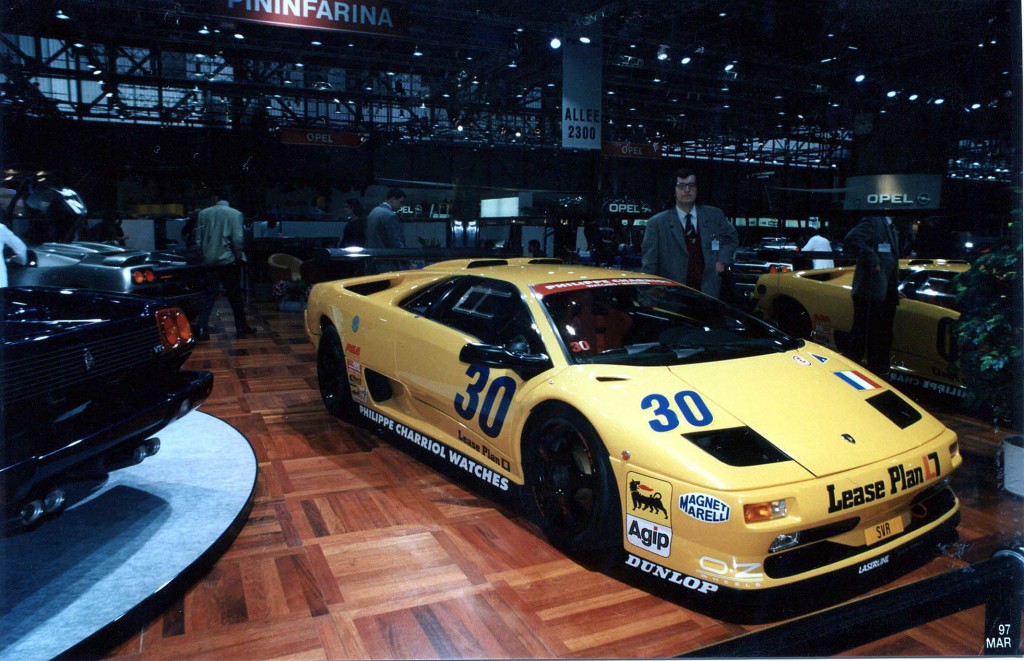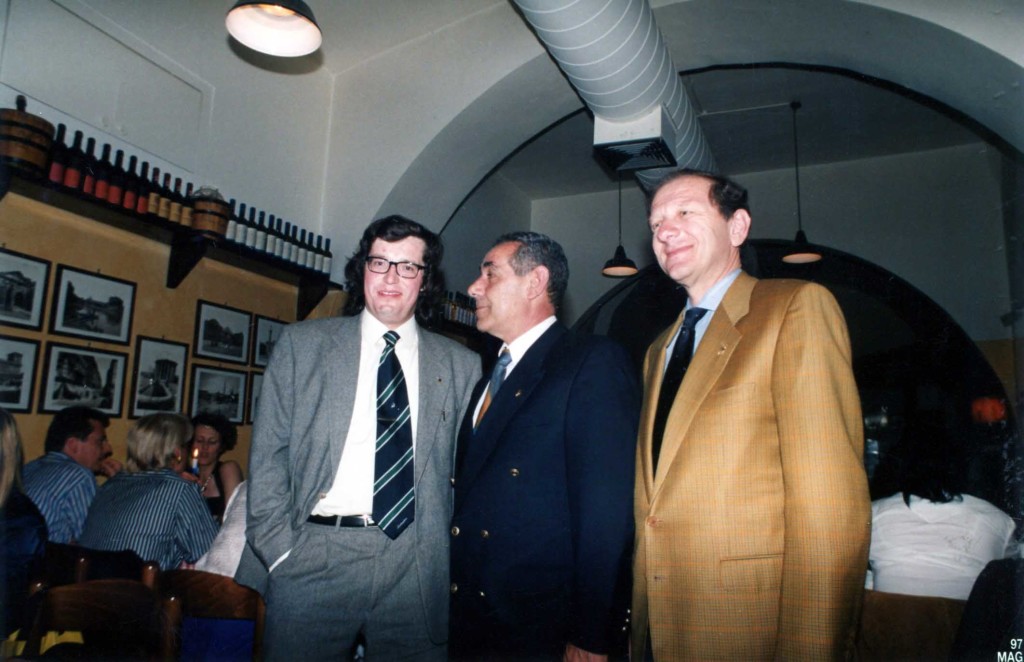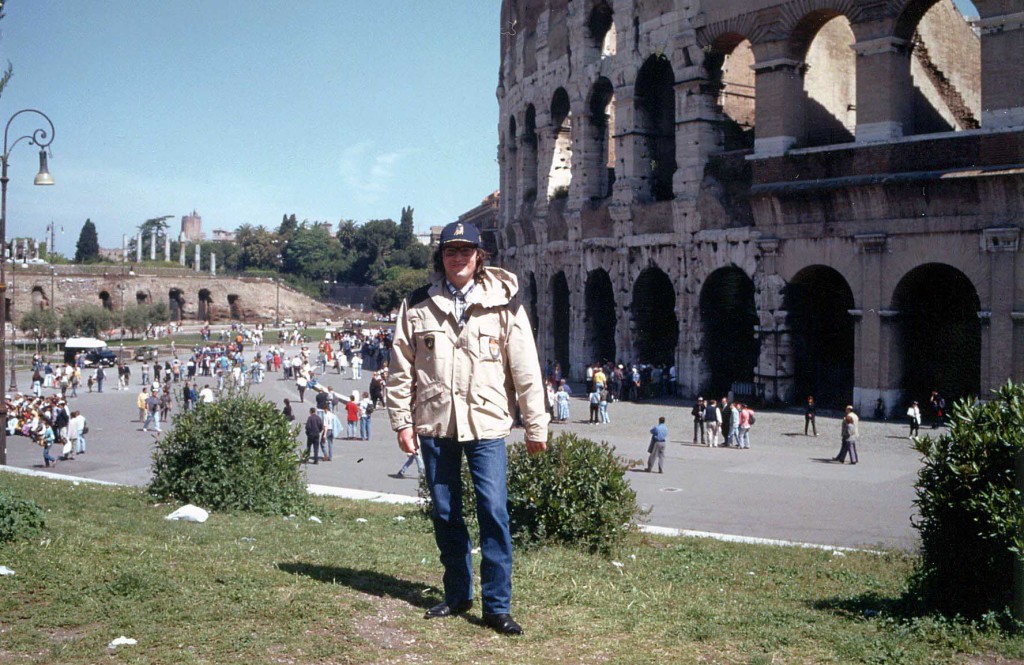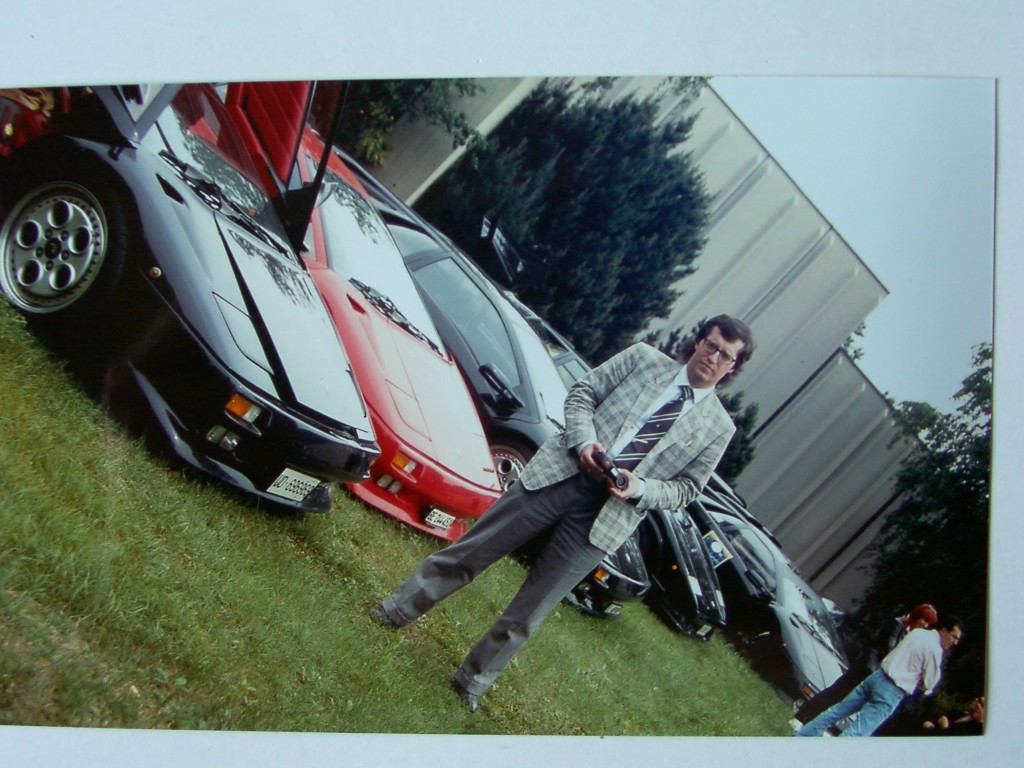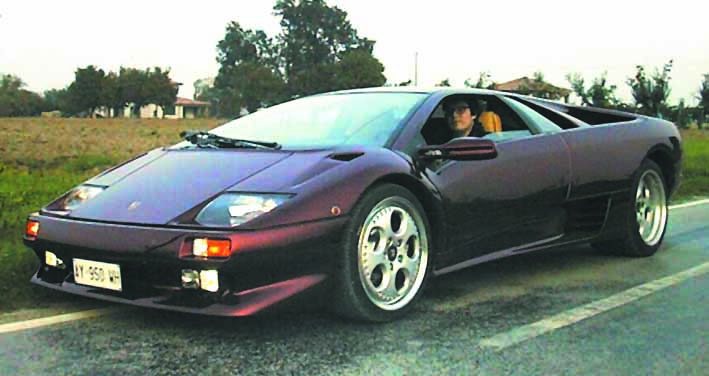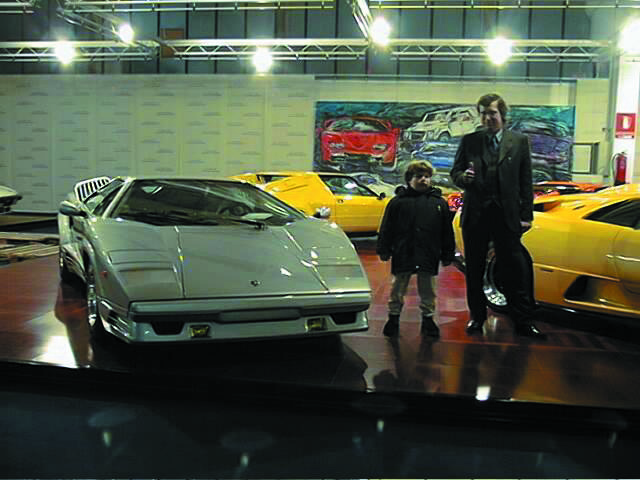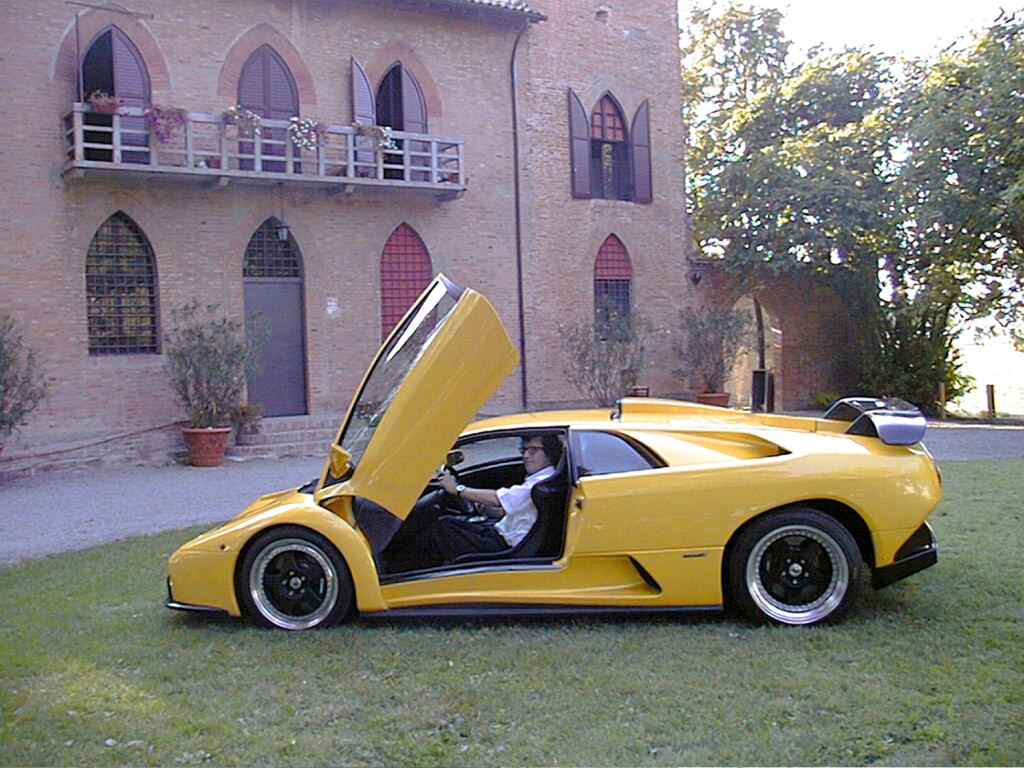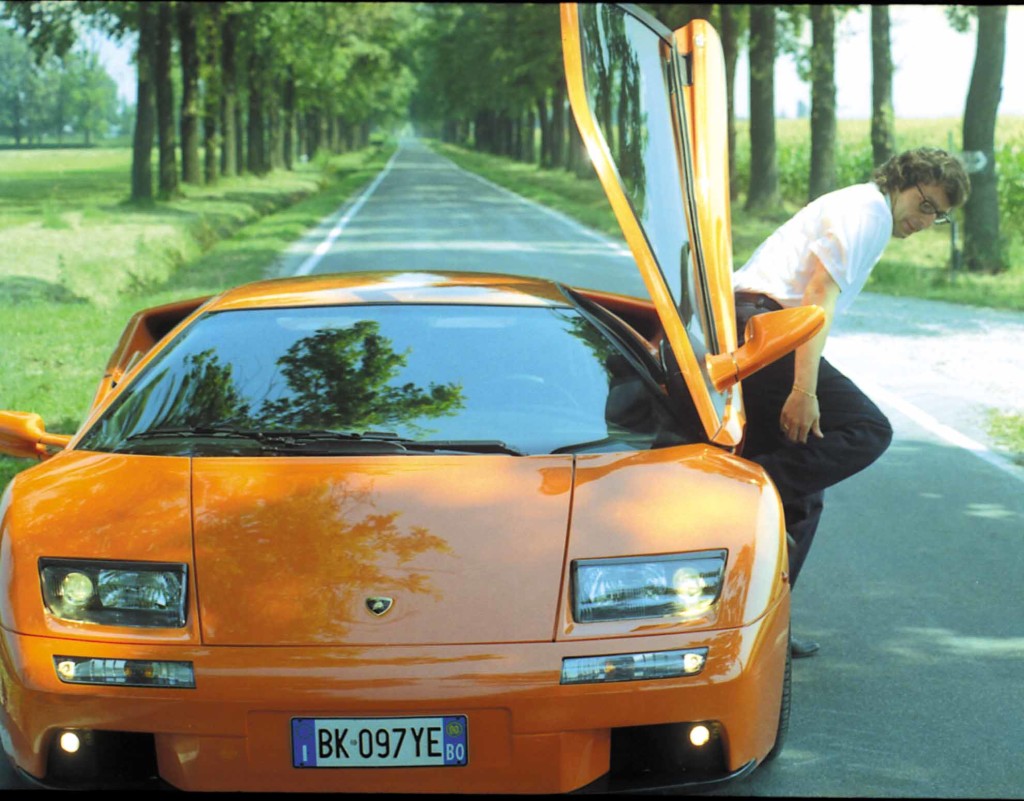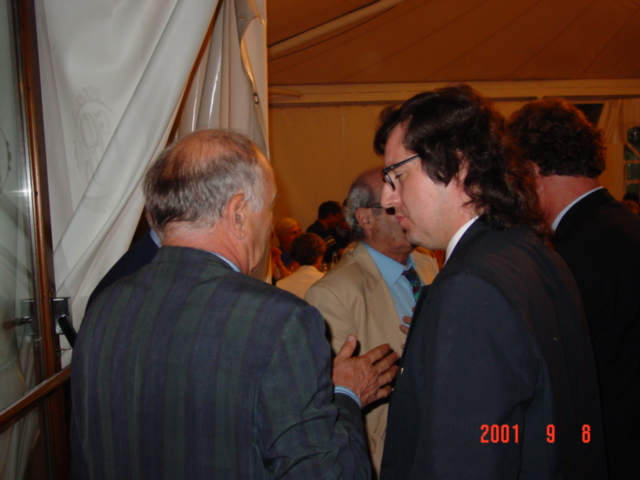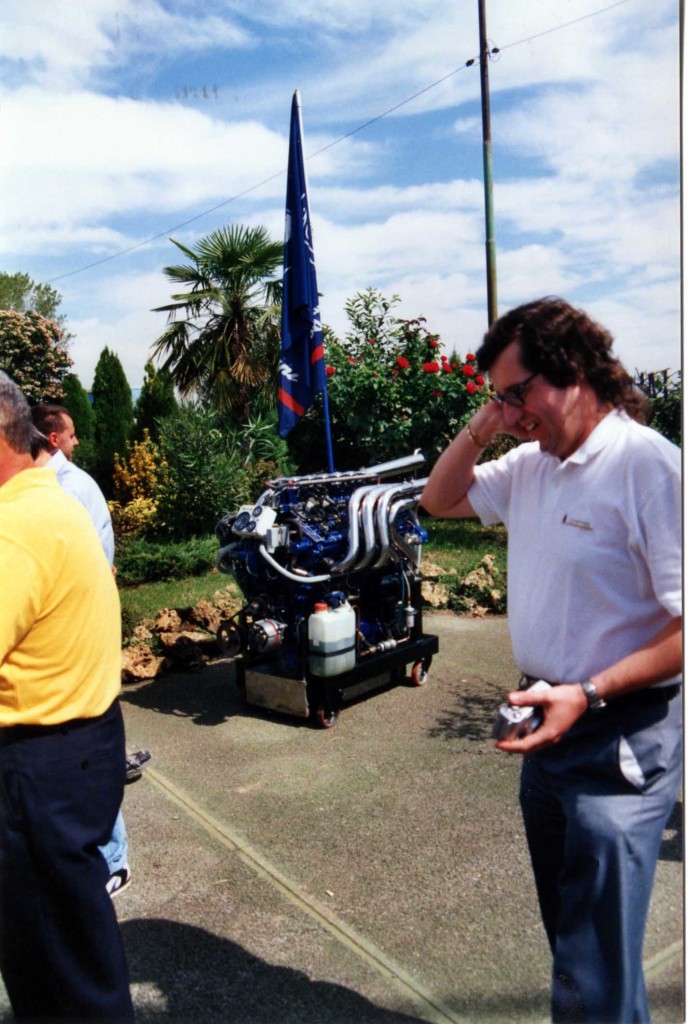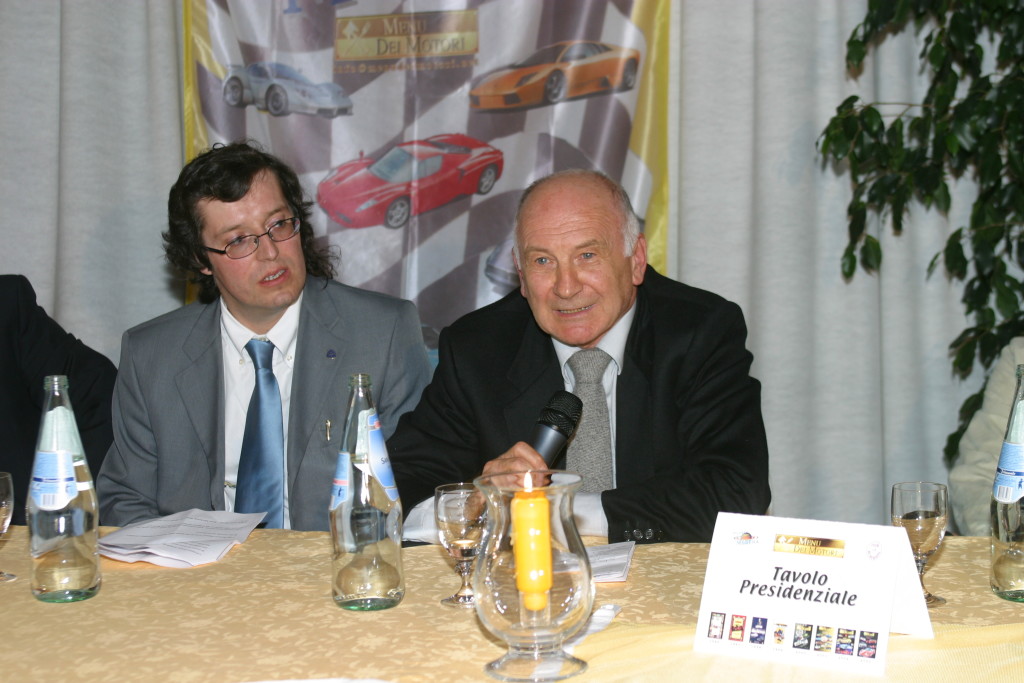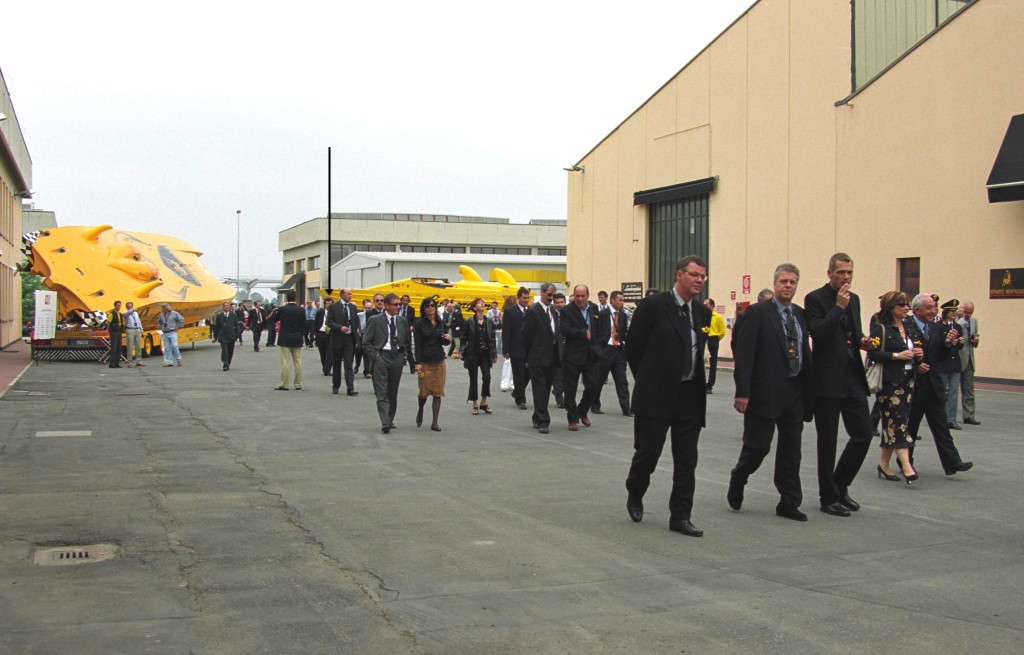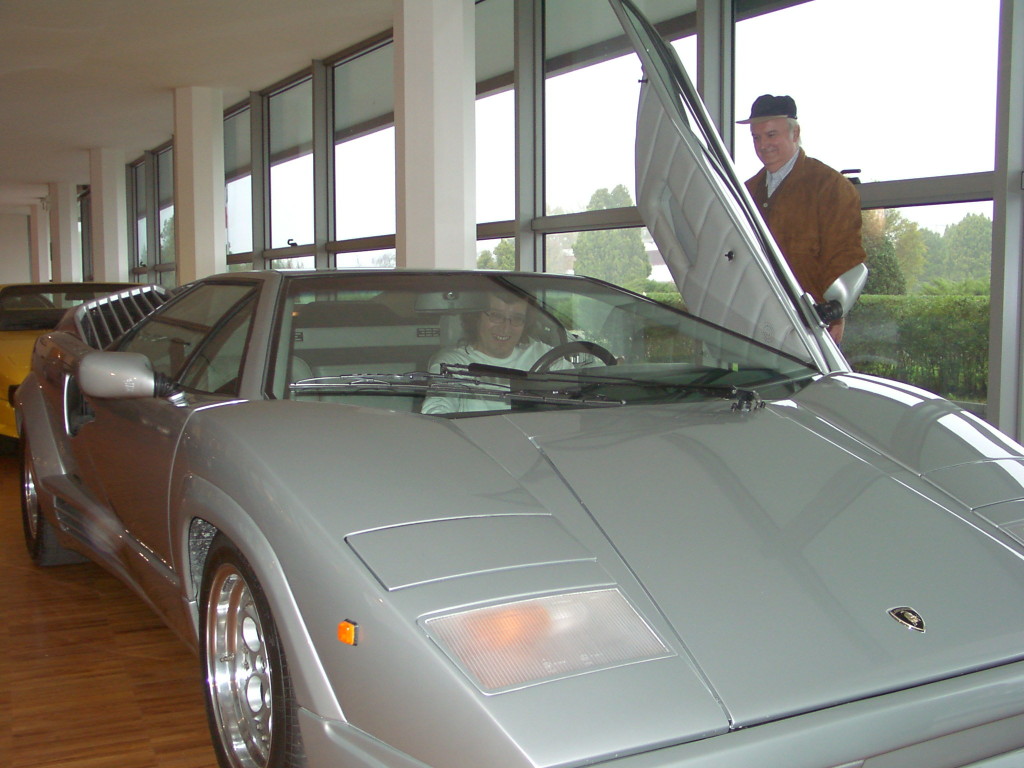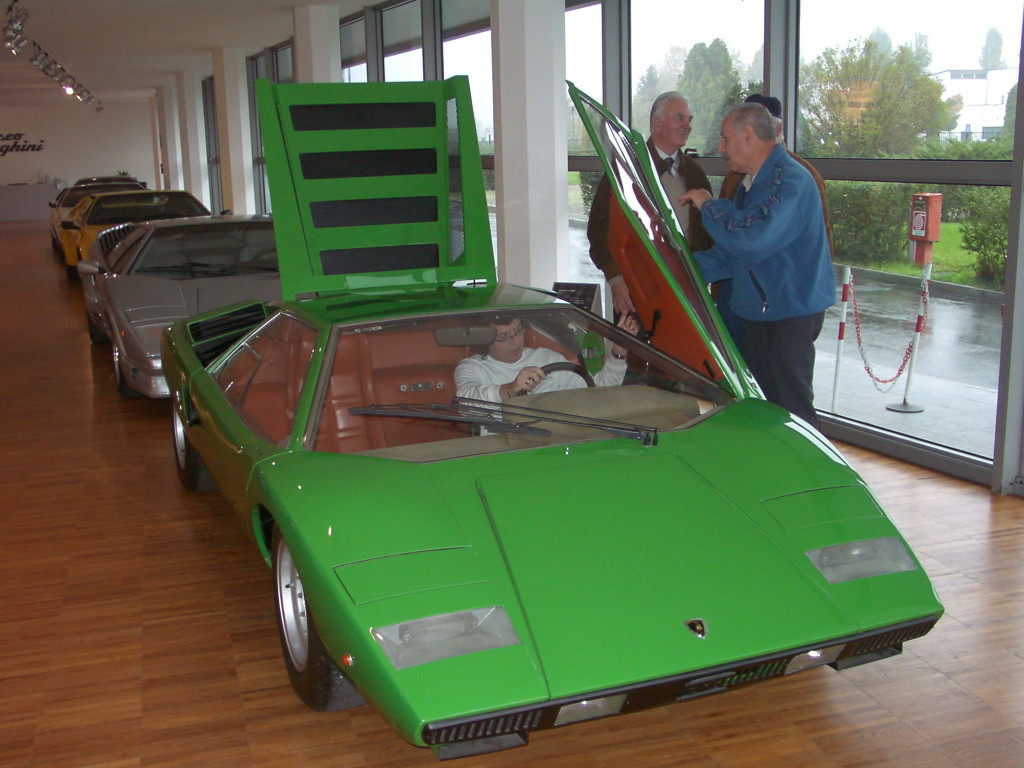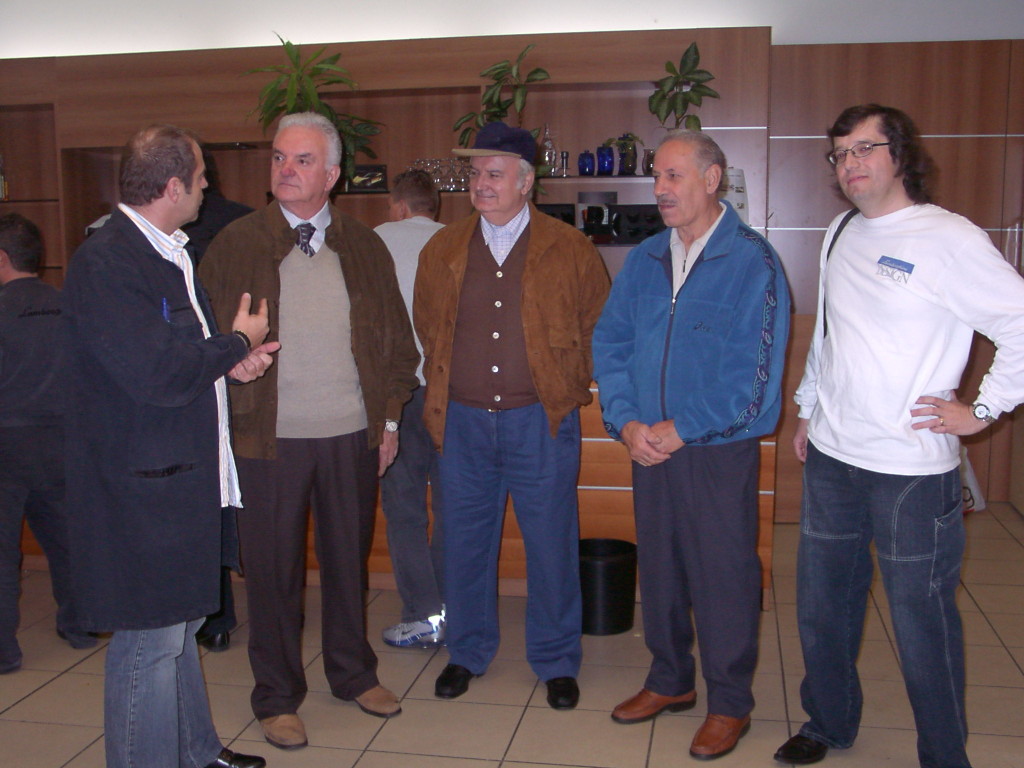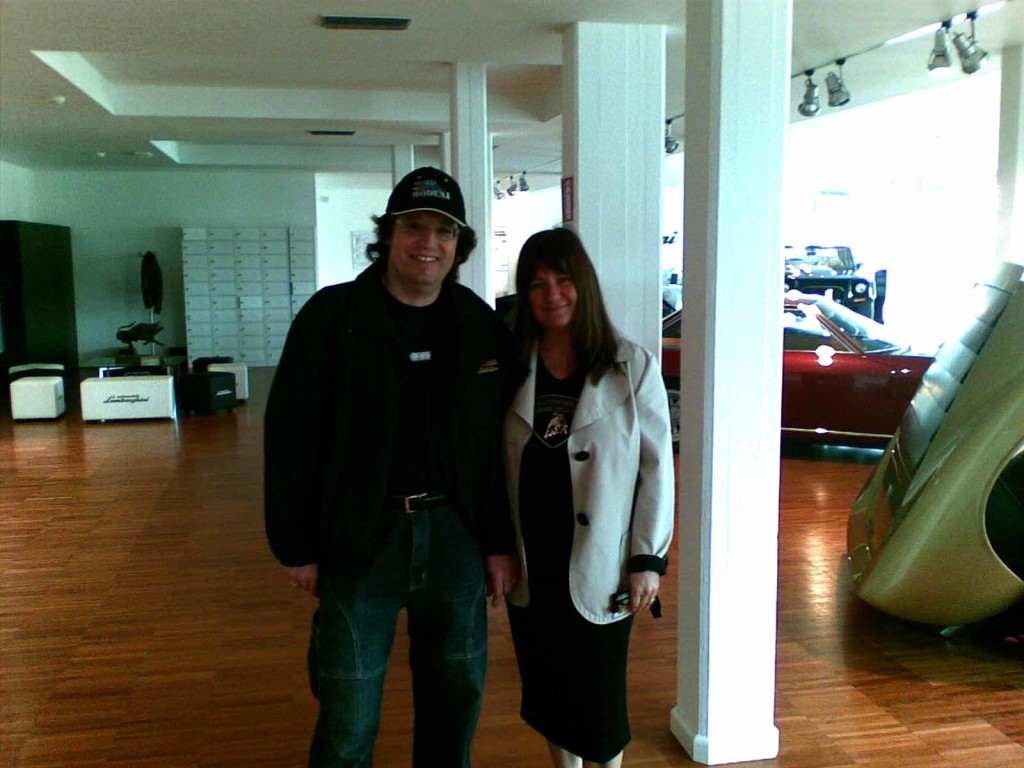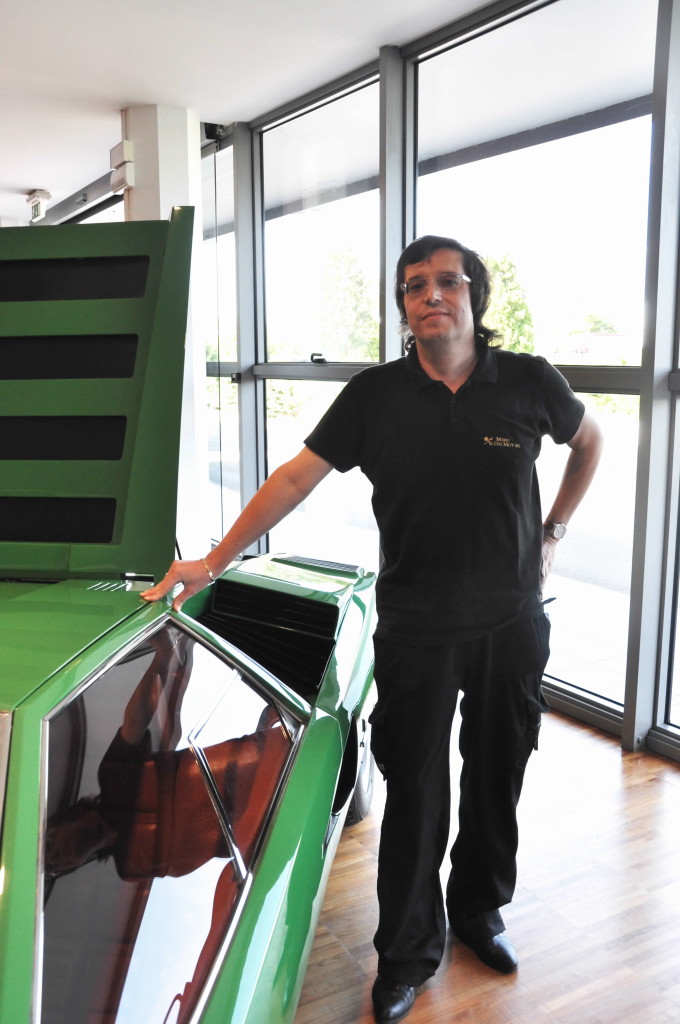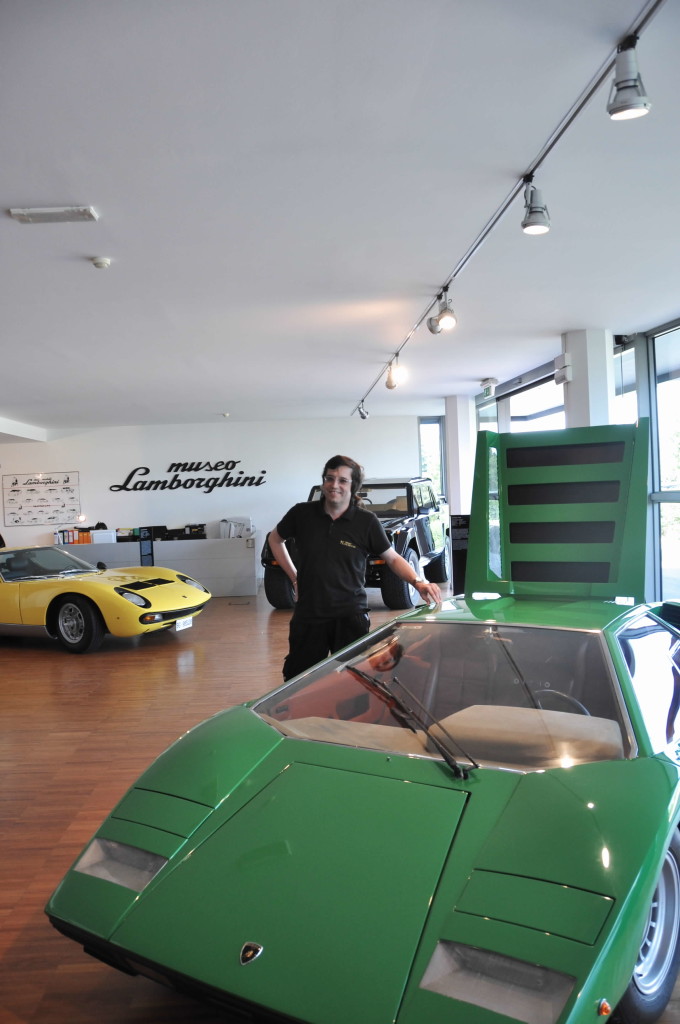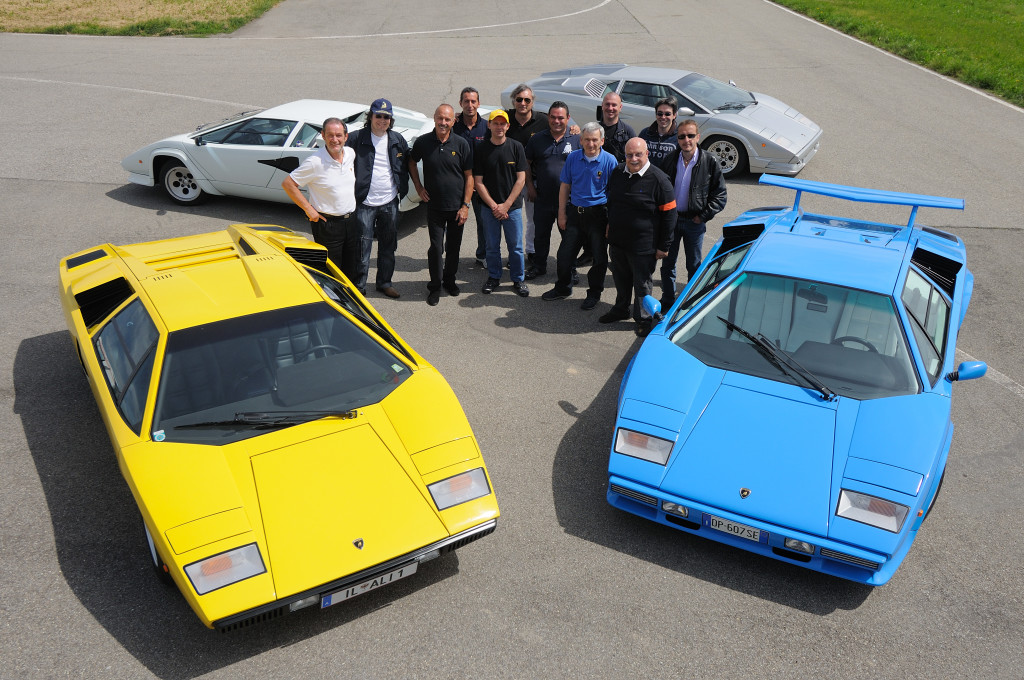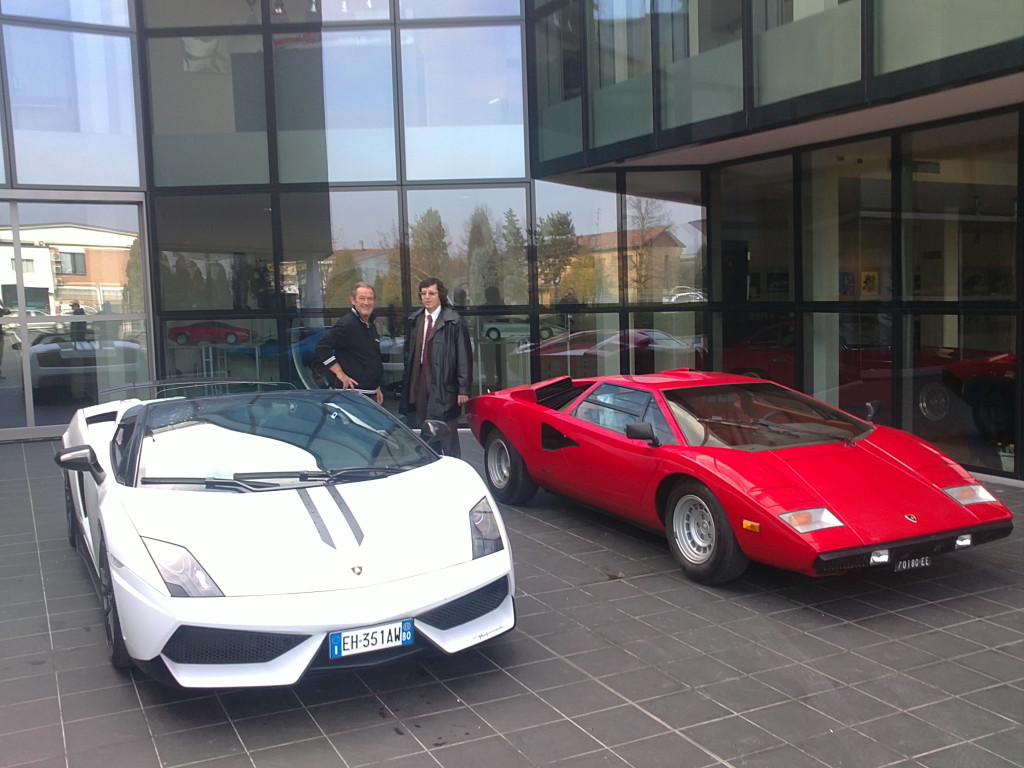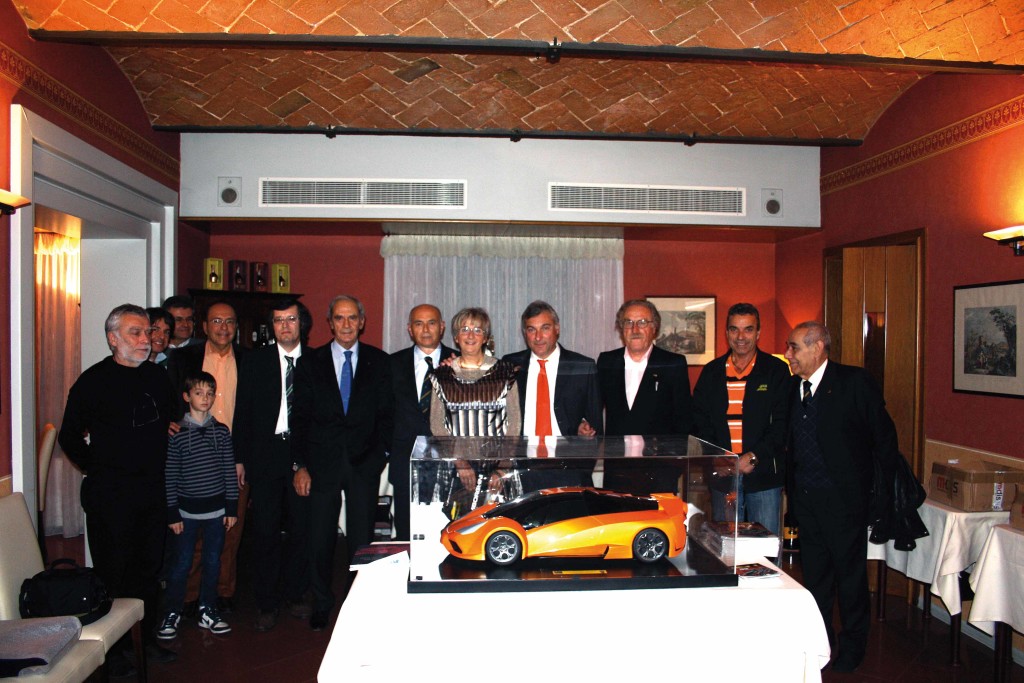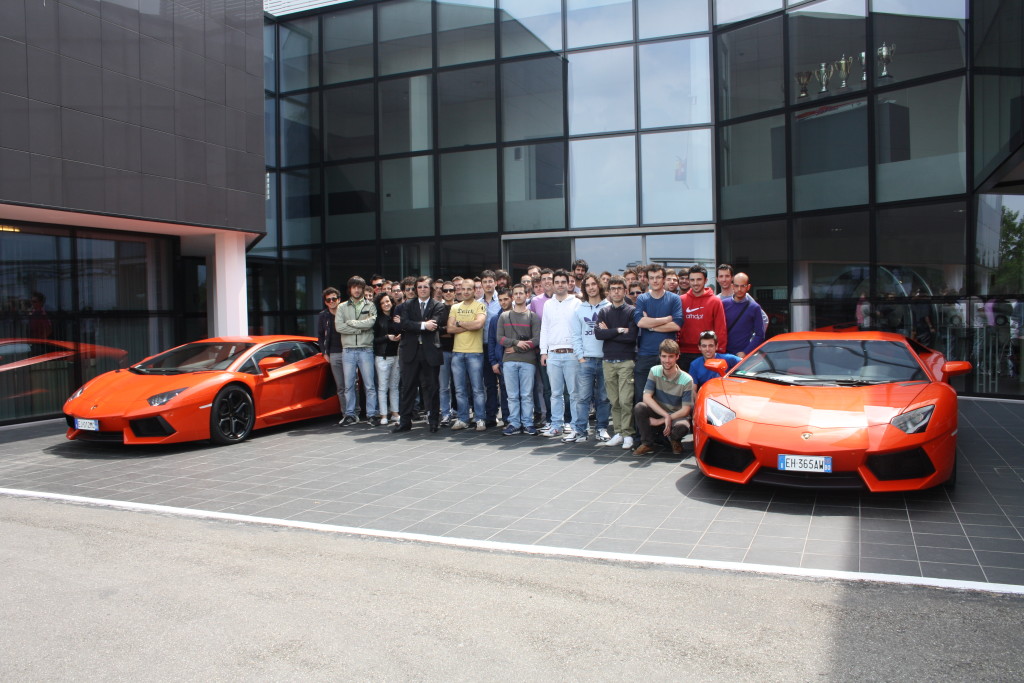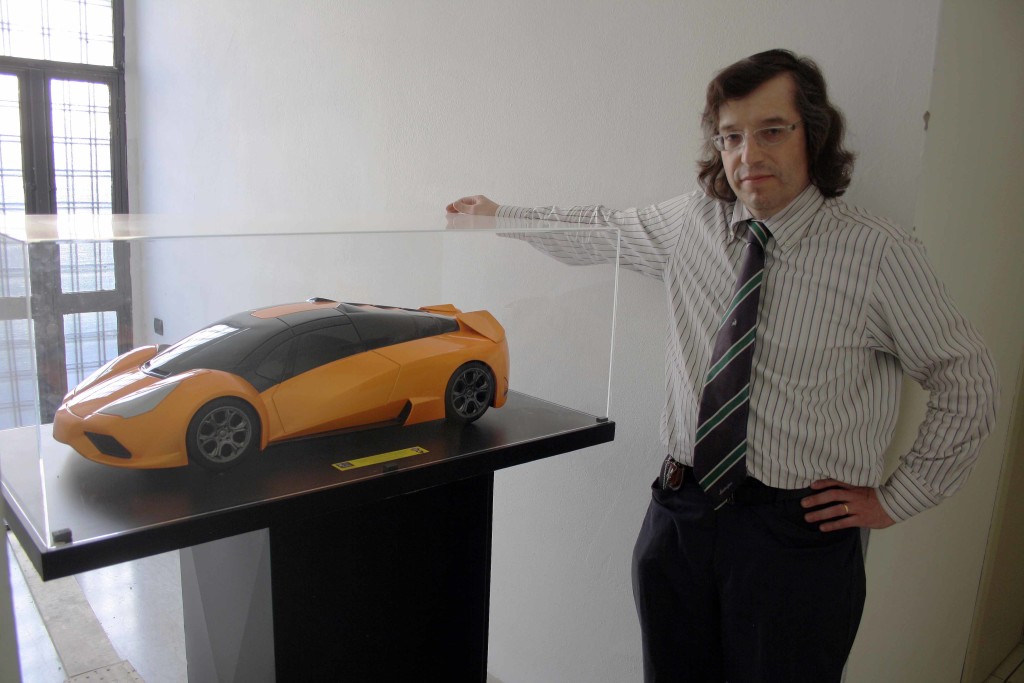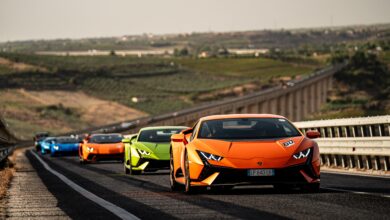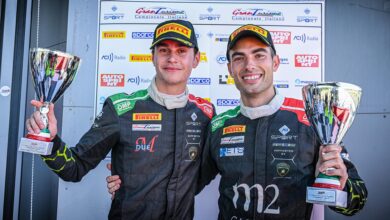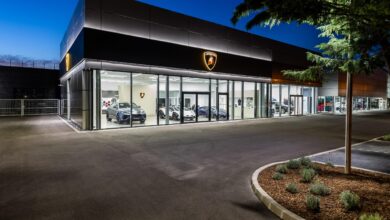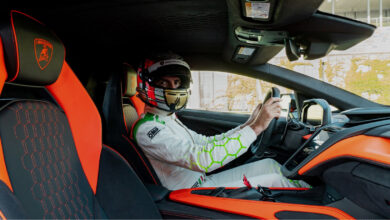Remembering – DESIGNER PROF. FABRIZIO FERRARI
"MY EXPERIENCE IN LAMBORGHINI" (1989-2001)
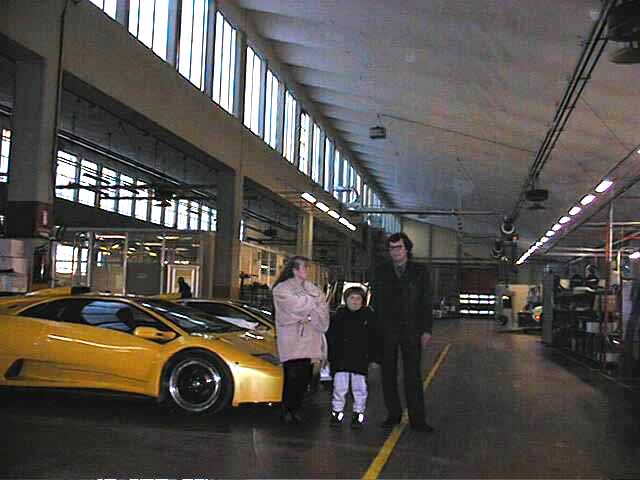
READ MORE INFORMATIONS (Click here)
My experience in Lamborghini is now more than twenty years and precisely date the time of my first visit to the company in 1988, when he ran the 25 th anniversary of the company (while I was at the time 24 years).
IMAGES COPYRIGHT: MENU DEI MOTORI AND LAMBORGHINI ARCHIVE
It was a normal company visit, organized by the University for students, but the writer was a real stroke of lightning: I was captivated from the environment, people and especially from cars they built!
Not surprisingly, only a year later, in 1989, exactly twenty years ago, I presented my thesis, based on a design Lamborghini.
Thanks to visit a year ago, I met the then Technical Director Lamborghini, Mr. Luigi Marmiroli, to which I turned immediately to get support and information for my Thesis that, since I had no more doubts, I absolutely had developed Lamborghini on a project.
1989 – THESIS: LAMBORGHINI “INTERCEPTOR”
Eng. Marmiroli immediately proved very helpful and friendly, and so we agreed that my thesis would have as its theme the design of a new body and its interior for a new Lamborghini supercar, based on technique (layout: chassis, engine, etc.). Lamborghini Countach.
At that time, the prototype of the P.132, what would become the Diablo, they were already in an advanced stage, but obviously still absolutely secret.
So, wisely, not to risk the business secrets with him who was still only a student, Eng. Marmiroli provided me with all the necessary technical data: measures characteristics, technical drawings and the whole basic layout but, as mentioned above, but the old Countach, which was still in production with the 25th Anniversary model.
After months of work and consultations both with my professors, both with the same Ing Marmiroli, always very interested and available, so I came to conceive the project of a new body, with its interior, which was perfectly suited to both the layout of the Countach, both to elementary production requirements.
The new Lamborghini “Interceptor”, so I renamed (as it was the fastest car on the road and easy to handle, which could not “catch” it were any other car on the road, so that he would not ever escape …) , so I made a real development project with: sketches and sketches in color of style, technical drawings (manual) with its orthogonal projections and sections, for a real plan to form a scale, and finally, the model also 1:5 scale, made of polyurethane foam and then finished and painted entirely by hand!
The images of the sketches, technical drawings and especially the scale model, you can comment on their own, but the best memory I cherish, not only to the amazement of the same teachers (and my classmates) to the view of the scale model completed, but especially for the sincere (I think) appreciation of Eng. Marmiroli which simply said, “not bad, if it was not ready the Diablo, this might even be a viable alternative”! Leaving so unwittingly escape in advance the real name of the future new “real” Lamborghini Diablo!
1991 – LAMBORGHINI STYLE EVENT CENTER BY CHRYSLER
After this exciting (and very educational) experience, following talks with the chief of staff Lamborghini, which Ing. Marmiroli I had addressed, unfortunately did not give any positive result: they were looking only mechanical designers and designers for the body.
I also tried the card at the Centro Stile Bertone in Caprie (TO), although at the time did not cooperate more with the Lamborghini, Sant’Agata but the company had entered in my thoughts fixed and did not want to, I could give it up, while doing, obviously, other professional experiences.
About a little over a year later, in early 1991, seemed to recur a real opportunity: in fact, as he reveal himself Ing Marmiroli, then Chrysler, large U.S. company and owner of the small craft and Lamborghini, was serious about creating a Centro Stile Lamborghini in Sant’Agata Bolognese (the same thing, over ten years later, then will the Audi).
According to the plans of Ing. Marmiroli, quell’ex student who so loved Lamborghini (myself), he certainly could (and should) enter the new staff that would then be the strength of the nascent Centro Stile Lamborghini. Unfortunately, it was perhaps fate that the undersigned will not go ever, as an employee, Lamborghini in fact, a few months after the new positive interview, after delays of program delays Chrysler, which by now was starting his disengagement Lamborghini (will sell the at the end of 1993), he canceled the whole program and the Centro Stile Lamborghini was so on paper, to the despair of myself!
1994/95 – THE RETURN OF P.140 THE DIABLO ROADSTER AND SUPERDIABLO
Thus passed more than two years and where, while still feeding my special relationship with the Lamborghini, I also did much to other professional commitments (Bugatti, Cizeta, Alfa Romeo, Ferrari, the giornalisno, etc.).
In 1994, with the “repechage” an old project dated 1989-90, the P.140, the “small” Lamborghini V10 with about 4 liters, always in rear center position (like Diablo), began what is now I could well be described as the decisive rapprochement of the undersigned to Lamborghini.
Just the will of Eng. Marmiroli at that time were brought to light the old working prototypes of the P.140, a project of the time Chrysler reached an advanced stage, but then forcibly abandoned almost on the eve of the presentation, especially due to the abandonment of the same Chrysler .
A project, however, is still valid, in which Ing. Marmiroli firmly believed and therefore decided to resubmit the new property Lamborghini, consisting of an Indonesian group that was headed by the son of the then Indonesian President Suharto.
The undersigned had the chance to try to help, even from the outside, the new project, dubbed the occasion L.140: same engine, same layout as the old prototype, but it was so the search started to refresh the body. Along with myself, many other designers participated in the competition for the design of the new body for the “small” Lambo, but because of the now chronic lack of money and investment by the new owners, all the projects (including the signed ), remained on paper, except by single “Calà” presented in 1995 by Giugiaro at the Geneva Motor Show, but also ever produced.
Almost simultaneously, the Technical Office Lamborghinbi was already working on another project for the development of Diablo: the “Roadster, then actually submitted one year after (1995). In this case, I decided spontaneously to make a proposal to my style, which was then examined briefly but, being the project already well advanced, the style was somehow already almost completely “frozen”.
In just a moment immediately following, Lamborghini was gone in the competition to design what was then commonly referred to as the “SuperDiablo”: a new model, project number L.147, always with the V12 engine rear central, according to the intentions of Eng. Marmiroli, Technical Director Lamborghini, would retain the entire basic structure (around doors, roof, windshield, etc..) Of the same Diablo, with the stated intent to hold a maximum of the cost of development and production of the new model.
Also on this occasion, as in the case of L140, the confusion and endemic lack of money and investments on new projects, not led to the production of a new Lamborghini, although the proposals were once again varied: among the most important the “Acosta” by Marcello Gandini (then commonly known as “SuperDiablo”), arrived at the stage of 1:1 scale maquette and “Song” by Zagato, which resulted in several prototypes marching, then tested for a long time by the test of ‘company, but which, however, did not meet the technical guidelines of the engineer. Marmiroli (in fact had a new windscreen, around doors, roof, and a whole new structure of the frame) and which, incidentally, was also one of the reasons why, in the end, halt the development process for the entry into production.
Even in this case, was subscribed to request a proposal, which I developed by independent, but respectful of the parameters imposed by Eng. Marmiroli: renamed “Bullfighting” (1995), was clearly still vote on paper, especially because of the complete lack of funds to build at least a prototype.
1996 – DIABLO SV ROAD AND SV-R FOR SUPERTROPHY – FINALLY IN PRODUCTION!
The two cases of missing and L.140 “SuperDiablo” (plus Diablo Roadster), however, were not totally useless: in fact, the relationship with Lamborghini and especially its Technical Director, Eng. Luigi Marmiroli, had now consolidated to the point that, at the first opportunity of real need, Eng. Marmiroli, although he has always maintained a special relationship especially with Marcello Gandini, called myself!
The situation and the need of the hour was simple and complex at the same time: it was urgently put into production a substantial development of Diablo, now in their sixth year of manufacture (with slight variations from the original model of 1990) and now indispensable necessity a real update, but at the same time, bringing into play the smaller investment possible, a penalty likely collapse of the same Lamborghini, whose finances now tended to red from time!
Eng. Marmiroli, but so too myself, “so they made a virtue of necessity” and conceived a program as simple as it is brilliant for the situation and the historical moment of Lamborghini reduce and simplify the road version of the Diablo, developing at the same time the most of the technical and performance, adding a series of aesthetic characterization, that make it even more attractive and aggressive. In parallel, to realize a kit for use on the track of the same car, suitable to create a further evolution and especially so in order to give life to the first trophy Lamborghini history!
In this way arose the Diablo SV (Super Veloce), for road use and the Diablo SV-R (Super Veloce Racing), for its namesake trophy Lamborghini: the SuperTrophy.
The result, exceptional for the time (especially for the Lamborghini at the time), eventually led to a further increase in the orders of the Diablo SV model (which, compared to a retail price obviously increased compared to the original model, the order had instead a lower cost of production, thanks to the considerable simplification of additional equipment for the weight reduction), but above all brought good publicity, as well as additional car sales, spare parts and provision of assistance, with the SuperTrophy! All made with very low resources, but with much, much enthusiasm and satisfaction (for me): I still remember with pleasure the long evenings in the then small craft and experience department Lamborghini, after normal working hours (when the workers of the production had already left), with the then head of the Department Experiences, Paris Secchia (in practice, the right arm of Eng. Marmiroli), to try out new details on the prototype body, and then again the long sleepless nights, past in my studio to make drawings and presentations, especially for Stephan Ratel (now owner of the FIA GT) that I still remember, he organized the SuperTrophy, practically only on the basis of my presentations, because the first car was ready just a few days before the Geneva Motor Show 1996, the day of the official presentation!
1997/98 – PROJECTS AND HOPE BEFORE THE ARRIVAL OF AUDI
After the incredible and happy experience of the Diablo SV-R, the situation became even more difficult and soon nebula Lamborghini, with the arrival of new CEO Vittorio Di Capua, who at the end of one of the most sustained history of Lamborghini, was lucky enough to be able then to now exhausted the ferry company from Sant’Agata Bolognese in the hands of Audi.
At that time, very intense and difficult projects succeeded one another without interruption, but all of them remained without a sequel, except one, which included the Audi V8 engine and a collaboration with the German company.
But first things first: after the SV-R (I would say almost simultaneously), there was the development of a hypothetical Diablo GT1, for the eponymous league, which was already handled by the same Ratel with other members (first and BPR then FIA GT). In this case, the undersigned did not fail to have Eng. Marmiroli its proposal, in the wake of the Diablo SV-R, but the car in a single copy and for different purposes, it was instead actually carried out and almost independent of the Lamborghini, by a French company: SAT.
The experience was in any case the car is not short-lived and never officially participated in the FIA GT was soon purchased by a passionate customer, who had then compete in local minor leagues.
At the same time, since the “Canto” by Zagato had in the meantime become a reality, with some prototypes marching (3?) And especially that the investment was, however, already been done, at least you could groped to re-design to make it better (the original just not convinced Eng. Marmiroli and beyond, including myself …)
So I faced, almost for fun, this new “challenge” clearly “virtual” (we already imagined that there would be a chance to develop any …)
Meanwhile Eng. Marmiroli was released by the company, thus giving up the post of Technical Director, due to differences of opinion with the CEO Di Capua and also to follow an external consulting contract of the same Lamborghini, with the Japanese Gigliato Design for the design of a new GT, with common features and supplies to the new “small” Lamborghini. The undersigned, as a freelancer, continued its collaboration with the engineer. Marmiroli who for the occasion had established his office inside the Lamborghini factory in Modena Engineering (the same building where the Ing. Mauro Forghieri, a few years earlier had designed, built and developed V12 engines and the cars Lambo Formula 1). So I studied various proposals for the new style Gigliato but, unfortunately, at the end of this project never came to production and the initiative came to an end soon with a stalemate.
At the same time, the General Manager Lamborghini at the time, Eng. Giorgio Venturelli, gave me a rather unusual assignment that, initially, I would not even want to accept, because apparently outside of my normal skills: the creation of a transparency (split) on different floors of the engine and gearbox V12 marine Off Shore races. Even that was an important experience for a “body shop” like myself, the engine was something fascinating, but at the same time mysterious, but fortunately, the confidence of Eng. Venturelli in myself, did not get misplaced: after a full month of intense work (August 1997), the table, made entirely by hand in color, was ready, especially with the help and the valuable advice of the then Head of engine marine, the friend Stefano Cappa!
Especially the experience once again proved not entirely fruitless, because immediately after the Ing. Venturelli also decided to entrust the task to review the draft of the new LM002, that the property Indonesian frowned and Zagato of which he had already built a full-scale mock-up: the “Borneo”.
Realized as a series of sketches and color plates, with the intention to make the best layout LM002 original proposal proved convincing enough, and especially compatible with the investments (as always limited) that the Lamborghini would at the time have bear.
The subsequent removal of the engineer. Venturelli by the aggravation of the financial statements and a new Lamborghini, but did quickly extinguish any initiative, including the design of the new LM002.
This led to the very last technical chapter, before the official Audi, who represented many ways, the initial spark which then led to the actual acquisition of Lamborghini by the German group VW-Audi (in early July 1998).
The new Lamborghini Technical Director, Eng. Massimo Ceccarani Since 1997 he was working on yet another new project of “small” Lamborghini, in perfect agreement with the AD Di Capua, who had materialized a first agreement with Audi for the supply of the engine of the future small Lambo.
After repeated failures (beginning with the far back as 1989), the P.140 (then L.140) and especially with the V10 engine in the late 80s, became obsolete (though without ever being actually produced), the program had become as simple as absolutely indispensable at all costs diversify the production Lamborghini, then “desperately” mono-model with only Diablo in all its variations (in the meantime studying the GT and the various model year, but the Diablo, however, was originally a 1990 model …), counting to also use at last the long-awaited “small”, but definitely lowering costs through the use of an engine derived from large series, such as the Audi V8 4.2!
Was prepared so quickly, by the Engineering Lamborghini, a new layout which provided, always in rear center position, the motor German exchange. On this layout had the opportunity to really work in a few, both the economic situation of the Lamborghini had meanwhile made desperate. Of course, the undersigned was certainly among those who “married” again without reservation that position, conceiving a project of the body, considerably ahead of its time, already provided a version of “double face”, ie cabrio-plate, roll safety bars and electrically retractable hard top, which allowed for a rapid change in actual coupe with the roof closed.
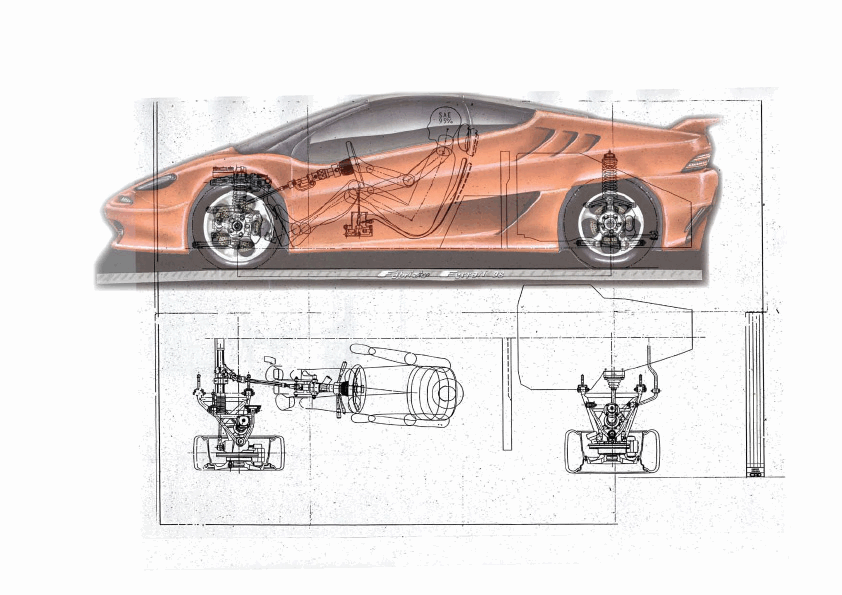
The saving investments, since the slaughter of the costs of design, development and approval of the engine-gearbox unit (ready because you had to mount the unit of derivation Audi), could thus be used for the development of starvation (and futuristic) mechanism of the removable rigid roof.
1998 – ACQUISITION BY AUDI
Once again, history decided otherwise and this time fate was really kind to the Lamborghini fact, the Audi engineers that now regularly attending the Lamborghini, reporting almost daily in Germany’s major bach ground they had, surprisingly (for their ), found in Sant’Agata, in the end made that the big boss of the Audi-VW, Ferdinand Piech, cared so much of the small but brilliant Emilian company, to arrive in a few months concretizzarne the full course with the approval of the AD Lamborghini Di Capua, in fact removing the historic Casa del Toro, a situation that has become really unbearable!
The result is now a part of history: with the coming of Audi, and the actual arrival (finally) of the new Diablo, the Murciélago presented in 2001, was re-designed again too small, in practice, was put in the pipeline essentially a new, modern 5-liter V10 engine, which was then included in the previous layout for the Audi V8, and then in the end this was originally the Gallardo, officially launched in 2003!
What represented the salvation of Lamborghini’s acquisition of Audi, however, was also the end of the technical collaboration of the undersigned with the Technical Lamborghini since the layout which included the V8 engine of Audi origin, was updated with the to give rise to new V10 Gallardo, the undersigned not received any request for more technical consulting, design it and not even for the body!
For the sake of the company, I was still tied to Sant’Agata as a consultant until 2001, working with the Press and in particular with the task of organizing all the Historical Archives in digital Lamborghini. In the meantime, I continued, almost exclusively for personal pleasure, to speculate (in private) new models Lamborghini, every time I submitted, however, amicably, to managers.
In 2003, now out of the company as a consultant, but always tied by a deep interest and appreciation for the company, I had another opportunity of an exciting encounter with the man who was about to become the new head of the nascent Centro Stile Lamborghini in Sant’Agata Bolognese (this time was truly born again thanks to the concreteness of Audi). The meeting with Luc Donckerwolke (now Director of the Centro Stile SEAT) was exciting and at the same time full of nostalgia (by myself). Luc is a true car enthusiast and design that, once aware of my past experiences, I immediately made a proposal, but now I could not accept: leave everything I do, to become a member of the staff in the future nascent Centro Stile Lamborghini! (The story was repeated …)
Obviously not nothing came of it (also because of interference by the Director of Human Resources Lamborghini at the time) and soon Donckerwolke, after having given birth and impetus to the Centro Stile Lamborghini (2003 to 2005), he emigrated to Spain to SEAT, leaving the reins to a friend met many years ago at the Centro Stile Alfa Romeo in Arese: Eng. Filippo Perini, with whom he still entertain a good relationship of friendship and also personal, as Professor of “Body Design” at the University of Modena.
Other professional interests had in the meantime developed with Ferrari (more than a return to a new interest), but especially with the Maserati, with which in recent years have established a special relationship, in all respects similar to for myself what was the Lamborghini in the 90s.

































